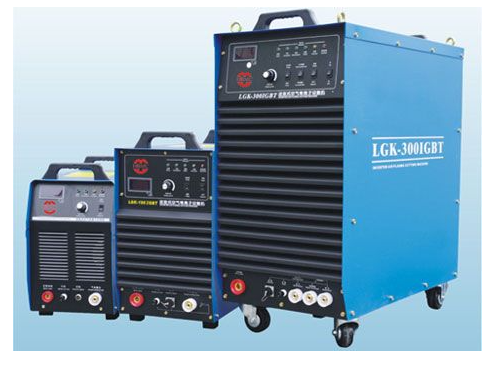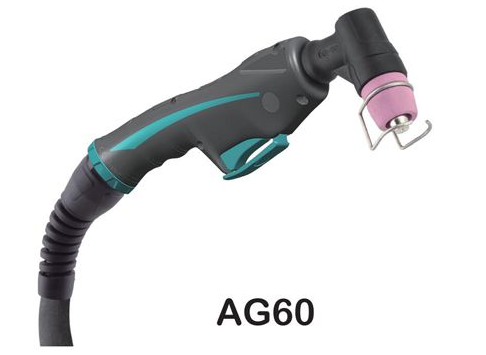Plasma cutting is a highly efficient method for cutting through metal, whether you're working with mild steel, stainless steel, aluminum, or other materials. The key to achieving optimal results in plasma cutting lies in selecting the right amperage. If the amperage is too low, the cut may be incomplete or rough, while too high of an amperage can result in excessive heat, affecting the quality of the cut and wasting energy. In this guide, we’ll discuss how to choose the right amperage for your plasma cutting needs to ensure precision, efficiency, and safety.

Plasma Cutter
1. Understand the Material Thickness
The thickness of the material you're cutting plays a significant role in determining the appropriate amperage. Thicker materials require higher amperage to achieve clean cuts. For instance, cutting thin sheet metal might only need a lower amperage setting, while thicker steel or aluminum will require higher settings to penetrate effectively.
Questions to ask:
How thick is the material I’m cutting?
What is the maximum thickness of material I will need to cut regularly?
Does the manufacturer provide an amperage chart for different materials and thicknesses?
As a general rule of thumb, a 30-40 amp plasma cutter is ideal for cutting materials up to 1/4 inch thick, while a 60-80 amp model is needed for cutting materials that are 1/2 inch or thicker. For industrial-grade cutting, machines with even higher amperage ratings (100-200 amps) are used for thicker plate steels or other heavy-duty applications.

Plasma Cutting Torch
2. Consider the Type of Material
Different metals require different amperage settings for optimal plasma cutting. Each material has distinct properties that affect how easily it can be cut. For example, stainless steel and aluminum require different settings than mild steel due to their varying thickness, composition, and melting points.
Questions to ask:
What type of material will I be cutting most often (e.g., mild steel, stainless steel, aluminum)?
Do I need to adjust amperage settings for different materials?
Here’s a quick overview of amperage requirements based on material type:
Mild Steel: 30-40 amps for 1/8” to 1/4” thickness; 60-70 amps for 3/8” to 1/2” thickness.
Stainless Steel: 40-50 amps for 1/8” to 1/4” thickness; 70-80 amps for 1/2” thickness.
Aluminum: 30-40 amps for 1/8” thickness; 50-70 amps for 3/8” thickness.
Each material has its own cutting requirements, so be sure to check the manufacturer’s guidelines for your plasma cutter and adjust accordingly to avoid poor cuts or material wastage.
3. Adjusting for Cutting Speed
The speed at which you cut also affects the amperage you need. If you cut too slowly with a high amperage, you risk damaging the material and creating excessive heat. Conversely, cutting too quickly with too low of an amperage can result in incomplete cuts. Striking the right balance between cutting speed and amperage is critical for clean, efficient cuts.
Questions to ask:
Plasma cutters often allow you to adjust the amperage and cutting speed in tandem. It's essential to find the right settings for your application to ensure smooth cutting and avoid issues like excessive dross buildup or warping of the material.
4. Precision and Cut Quality Requirements
The level of precision required in your cuts can also influence the amperage setting. If you’re working on projects that require intricate cuts with minimal distortion, a lower amperage with a slower cutting speed is recommended. Conversely, for rough cuts where precision isn’t a priority, a higher amperage with faster speeds might be acceptable.
Questions to ask:
How precise do my cuts need to be?
Am I cutting for decorative or aesthetic purposes, or is function the primary concern?
For more intricate or detailed cuts, use a lower amperage to maintain precision. If speed is more important than finish, higher amperage may be used to increase productivity.
5. Evaluate Your Plasma Cutter’s Capabilities
Not all plasma cutters are built the same. When selecting a plasma cutter, it’s crucial to ensure that the unit you choose is capable of delivering the amperage required for your projects. Some plasma cutters offer adjustable amperage settings, while others are designed to perform optimally within a fixed range. Make sure to choose a machine with enough amperage flexibility to handle your diverse cutting needs.
Questions to ask:
Does my plasma cutter support adjustable amperage, or is it fixed?
What is the maximum amperage rating of my plasma cutter, and is it sufficient for my projects?
Can my plasma cutter handle the load and provide consistent power output for extended cutting periods?
It's always best to choose a plasma cutter that offers a higher amperage rating than you think you need. This provides versatility for cutting a range of materials and thicknesses, giving you the flexibility to take on different projects without worrying about insufficient power.
Conclusion
Selecting the right amperage for plasma cutting is critical to achieving clean, efficient cuts while avoiding unnecessary material wastage or equipment strain. By understanding the material thickness, type of material, cutting speed, and your precision requirements, you can choose the correct amperage for your project. Additionally, ensuring that your plasma cutter is capable of handling the required amperage will help optimize performance and extend the life of your equipment. Always refer to your plasma cutter's manual and consider consulting with the manufacturer to determine the ideal settings for your specific needs.







